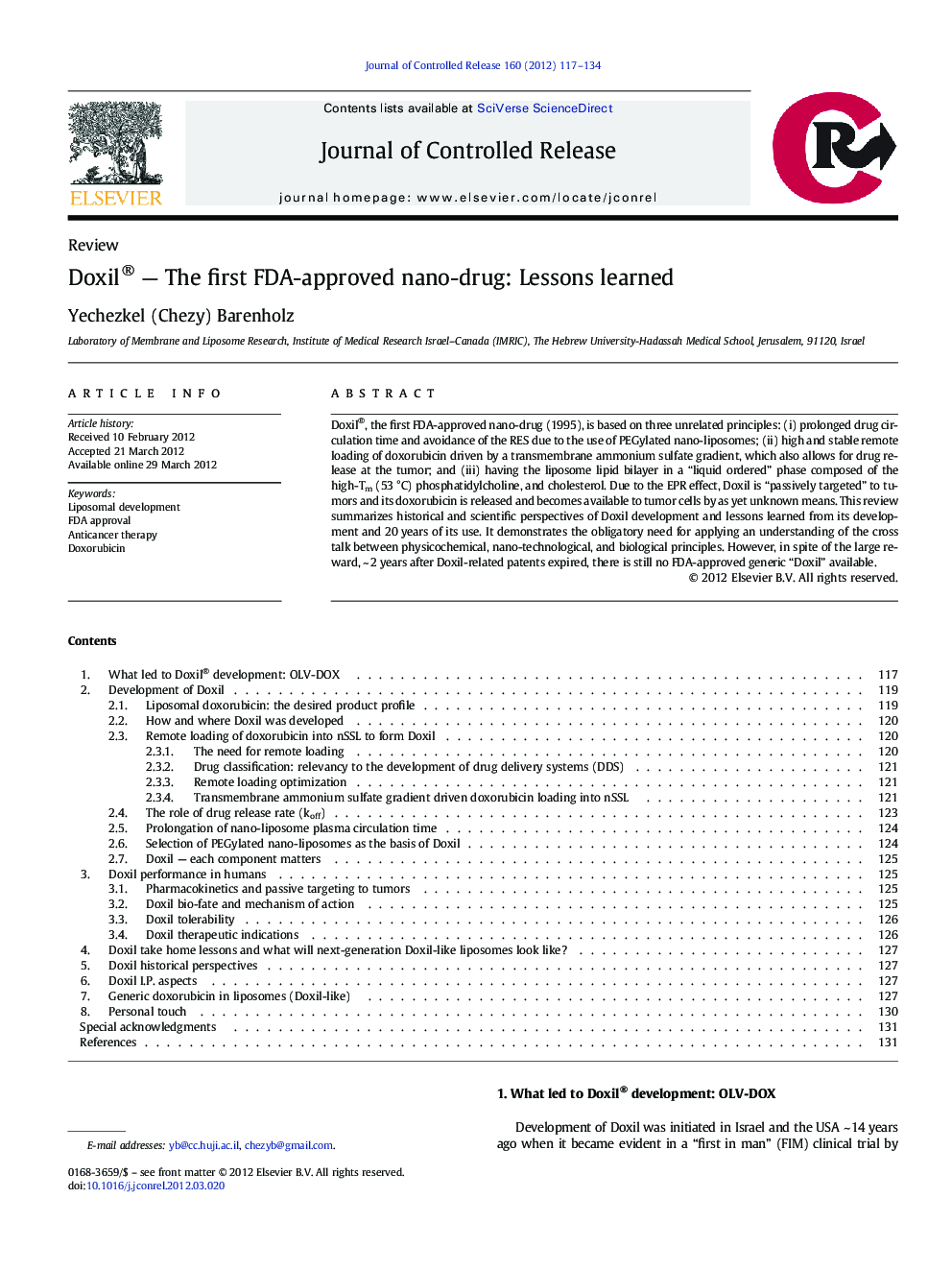| Article ID | Journal | Published Year | Pages | File Type |
|---|---|---|---|---|
| 1424607 | Journal of Controlled Release | 2012 | 18 Pages |
Doxil®, the first FDA-approved nano-drug (1995), is based on three unrelated principles: (i) prolonged drug circulation time and avoidance of the RES due to the use of PEGylated nano-liposomes; (ii) high and stable remote loading of doxorubicin driven by a transmembrane ammonium sulfate gradient, which also allows for drug release at the tumor; and (iii) having the liposome lipid bilayer in a “liquid ordered” phase composed of the high-Tm (53 °C) phosphatidylcholine, and cholesterol. Due to the EPR effect, Doxil is “passively targeted” to tumors and its doxorubicin is released and becomes available to tumor cells by as yet unknown means. This review summarizes historical and scientific perspectives of Doxil development and lessons learned from its development and 20 years of its use. It demonstrates the obligatory need for applying an understanding of the cross talk between physicochemical, nano-technological, and biological principles. However, in spite of the large reward, ~ 2 years after Doxil-related patents expired, there is still no FDA-approved generic “Doxil” available.
Graphical abstractDoxil vial as sold by Sequus Pharmaceuticals (starting 1996)Figure optionsDownload full-size imageDownload high-quality image (89 K)Download as PowerPoint slide
